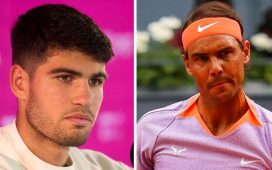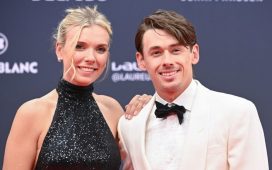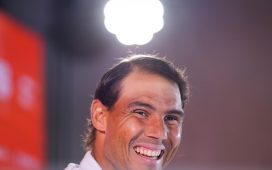Cole Porter, the composer of the 1953 Broadway musical “Can Can,” wrote of loving Paris in the springtime. Fortunately, he also loved it in the fall.
For nearly 100 years, the French championship has been the culmination of the spring pro tennis season. Played from late May until early June at Roland Garros in Paris, the tournament’s long, gritty matches on red clay often stretched into darkness.
But with the tennis calendar upended like a chess board in a windstorm because of the coronavirus, this year’s French Open is now being contested in autumn, just one week after the United States Open in New York. With Wimbledon canceled this year, the French Open is the final major of the season instead of the second.
As soon as the French Tennis Federation announced it would hold the tournament from late September into early October, after the U.S. Open, questions arose as to how players would feel about traveling to the United States for one major tournament on hard courts and then flying right to France for another major on a completely different surface.
“The transition obviously was not easy,” said Victoria Azarenka, who flew from New York City to Rome for the Italian Open the day after she lost in the final of the U.S. Open and then played her first match on clay two days later. “Change of surface can be a challenge for a lot of players. For some who practiced longer on clay and played matches in Europe it may be a benefit.”
Five of the top 10 women on the WTA Tour are European, and four of them — Simona Halep, Elina Svitolina, Kiki Bertens and Belinda Bencic — opted out of the U.S. Open. Ashleigh Barty, an Australian ranked No. 1, skipped the U.S. and French Opens because of Covid-19, and last year’s U.S. Open champion, Bianca Andreescu, withdrew because of injury. Naomi Osaka, the current U.S. Open champion, pulled out of the French Open with a hamstring injury.
Among the men, nine of the top 10 are from Europe, though all but Rafael Nadal and Gael Monfils traveled to New York. Roger Federer is out for the rest of the season following knee surgery.
Playing on clay demands a vastly different skill set than competing on hard courts. Balls bounce higher, mobility and agility can be tested as sliding side to side is often required and long matches are physical and mental endurance tests.
“When the season is on, everyone is playing every week so the game is there,” Yulia Putintseva, who lost in the quarterfinals at the U.S. Open and then headed straight to Europe for the Italian Open, said. “Jumping so quick from hard courts to clay courts, there can be injuries because you have to get used to sliding and to the conditions.”
Conditions at this year’s French Open will also be different because of the time of year it is being played. In May, sunset in Paris isn’t until about 9:30; in late September it is just after 7:30. The sun is at a different angle later in the year, which can have an impact on a player’s serve and overhead shots. Playing in chilly night air, as well as under the lights, can slow the ball and make it tricky to track. It also tends to rain more in the fall, making courts slower and balls heavier.
“The later in the year, the lower the bounces,” Martina Navratilova, winner of 18 major singles championships, including two French Opens, said. “You have a slower court, slower balls, heavier conditions over all. Rafa doesn’t like that. He likes a sunny, dry day and a high bounce.”
Nadal may get his wish because Paris has experienced an unusually warm September, though it is expected to cool a bit midway through the tournament. At the Italian Open in Rome, temperatures soared into the mid-90s. That helped Nadal cruise through his matches against Pablo Carreño Busta and Dusan Lajovic before he was upset in the quarterfinals by eventual runner-up Diego Schwartzman. Dominic Thiem and Alexander Zverev, the men’s finalists at the U.S. Open, withdrew from Rome after Thiem won a four-hour, five-set battle in New York to claim his first major championship.
There will be other big differences at this year’s French Open. For the first time, the main stadium, Court Philippe Chatrier, will have a retractable roof, allowing for play on rainy days. (Unlike hard courts, clay absorbs water, allowing play to continue during drizzles.) Lights have been added to 12 additional courts, enabling more matches to be played at night. And, unlike the U.S. Open, a limited number of fans will be allowed on site.
“I actually think it will be weird to have fans,” Shelby Rogers, a U.S. Open quarterfinalist, said. “Maybe a little standoffish from the players not used to being around people. It will be another adjustment, something to adapt to.”
As they did in New York, players at Roland Garros will be restricted in their movements from hotel to tournament site and will be subjected to health protocols, including wearing masks and using only designated routes to and from the courts to avoid interaction with spectators. For Thiem, runner-up the last two years to Nadal, recovering in time will be the hardest part.
“Physically, I’m going to be fine, 100 percent,” Thiem said. “The question is how I’m going to do it with the emotions mentally. Obviously, I’ve never been in this situation.”
And then there is Nadal, the 12-time French Open winner who is looking to tie Roger Federer’s men’s record of 20 career majors with another Roland Garros win. Nadal did not touch a racket for two months at the beginning of the pandemic and only resumed practice in May. He did not play a match from early March when he won a hard-court tournament in Acapulco to the Italian Open last week.
“Let’s see how it all turns out,” Novak Djokovic, the world No. 1 and the Italian Open champion, said. “Rafa decided to stay and practice, and surely that gives him more advantage. But even if he didn’t practice for that long on clay, he’d still be the No. 1 favorite at Roland Garros or any other clay court tournament, just because he’s Rafa.”







